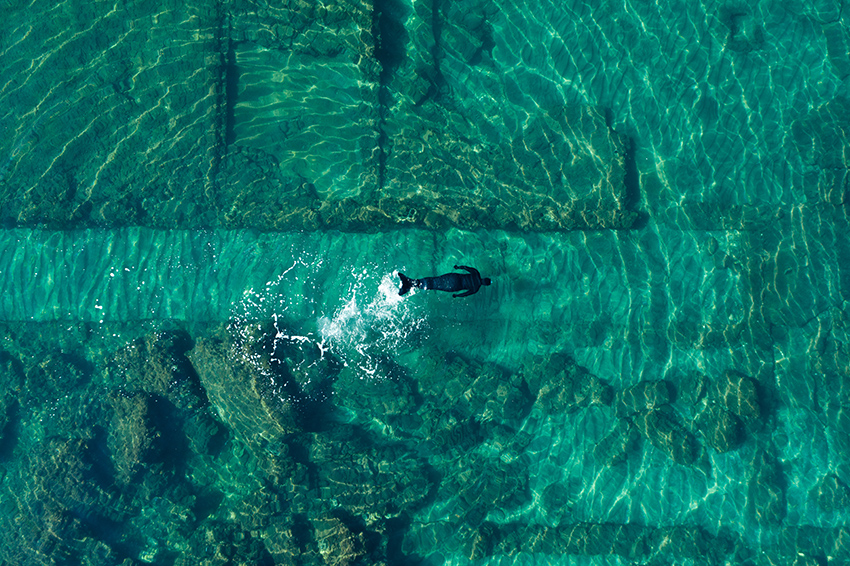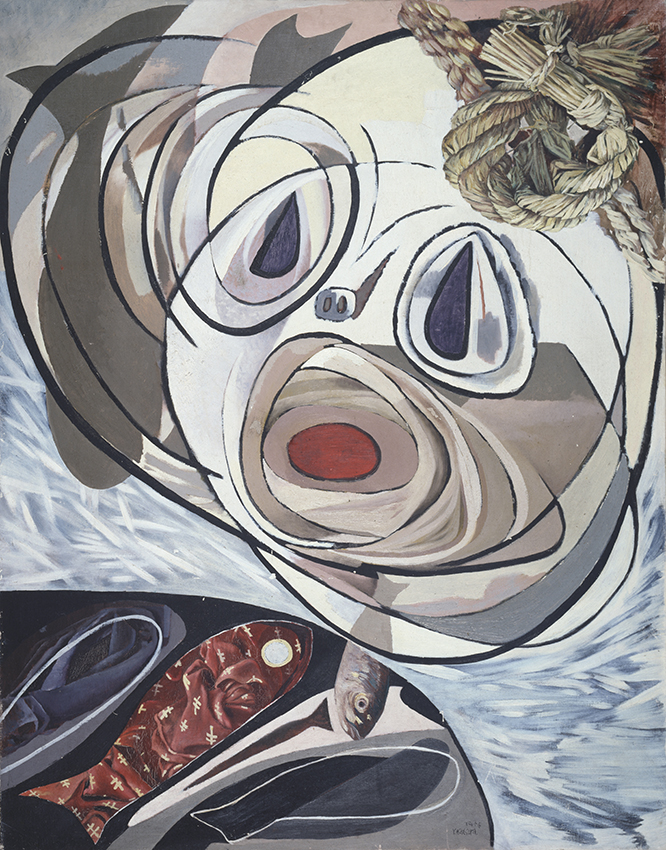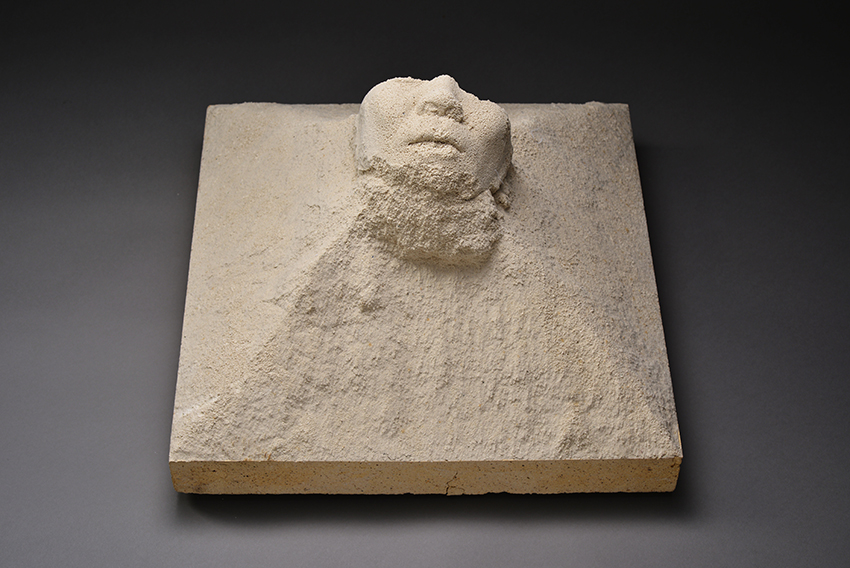OUR ECOLOGY: TOWARD A PLANETARY LIVING
HAPPENINGText: Alma Reyes
It may require patience to watch the 16-minute film Arrow of Time (2023) by Lithuanian Emilija Škarnulytė, but is worth sitting through. Škarnulytė is a visual artist and filmmaker widely known for her immersive video installations that span spaces encompassing geology, oceanography, ecosystems, feminism, politics, and the history of civilizations.

Emilija Škarnulytė, Arrow of Time, 2023
The scene emulates the ancient Roman city Baia, trapped under water due to seismic activity in the Mediterranean Sea. We see an appealing mermaid in the form of a futuristic cyborg swimming over the ruins. An enormous snake, both a symbol of wisdom and evil, glides over the machinery inside the nuclear plant. The heart of the ocean beats by the embedded sounds of sea waves and water, pounding on our conscience about the power of technological engineering that has taken over our fragile ecosphere.

Yuki Katsura, Man and Fish, 1954, Collection: Aichi Prefectural Museum of Art
Return to Earth – Art & Ecology in Japan, 1950s-1980s recounts the adverse consequences of pollution and radioactive contamination as interpreted by Japanese artists. Documented photographs detail Japan’s history of natural disasters, including the unforgettable Minamata disease phenomenon triggered by wastewater chemical poisoning. The oil painting Man and Fish (1954) by Yuki Katsura suggests a human figure that ingested radioactive fish.

Ryoji Koie, Return to Earth (1), 1971, Collection: Tokoname City (Aichi, Japan), Photo: Ito Tetsuo
The intriguing Return to Earth (1) (1971) by Ryoji Koie reveals the artist’s own face half-crumbled in a mound of shard, formed by crushed sanitary porcelain. The concept indicates manufactured objects’ and pulverized human forms’ conclusive return to earth.
Read more ...





